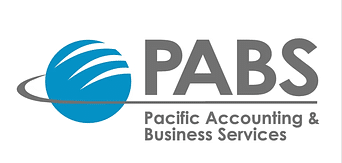Understanding the New W-4 Form Changes and Their Payroll Impact
If you’ve hired employees or filled out a W-4 yourself, you may have noticed that the form changed significantly back in 2020. The IRS redesigned it to make withholding more accurate and easier to understand. Many business owners and employees felt confusion or weren’t sure how it affected their bottom line Here’s a breakdown of what’s different, why the changes were made, and how they affect payroll.
What Changed in the W-4 Form?
Before 2020, employees used allowances to adjust their tax withholding. More allowances mean less tax withheld, while fewer allowances would give more tax withheld. The IRS removed allowances from the W-4 to simplify calculations and align with changes from the Tax Cuts and Jobs Act.
Now, employees provide straightforward income details instead of claiming allowances. It can be broken down into five sections:
- Personal Information – Includes name, Social Security number, and filing status.
- Multiple Jobs or Spouse Works – Helps adjust withholding for dual-income households (meaning both spouses work).
- Dependents – Allows employees to claim credits for dependents directly on the form.
- Other Adjustments – Covers additional income, deductions, or extra withholding amounts. Extra withholding can be necessary if you work in the gig economy (i.e. have a “side job”)
- Signature – This is required to validate the form and make the changes you desire.
These changes were designed to provide a clearer picture of an employee’s tax situation, reducing the chances that you would be “over” or “under” your tax withholding for the year.
Why Did the IRS Change the W-4?
The withholding process had long been seen as confusing and overwhelming. These changes were made to make it easier. The Tax Cuts and Jobs Act of 2017 eliminated personal exemptions, making the old W-4 allowance system outdated.
The new form provides a more precise method of withholding that considers income sources and tax credits. It helps employees avoid large tax refunds or unexpected tax bills and encourages transparency by having employees estimate their actual tax liability more accurately. It can also help you plan ahead for the next year if you made a mistake.
How Does the New W-4 Impact Payroll?
These changes mean adjusting payroll processes to accommodate the new withholding calculations. Employees who submitted a W-4 before 2020 don’t need to fill out a new one unless they want to adjust their withholding. New hires must use the updated version. The new form leads to more precise tax withholding. Many payroll systems now use the new withholding methods. Businesses should ensure their software is up to date.
How Employees Can Fill Out the New W-4
Filling out the new W-4 is straightforward but requires a bit more detail than the old form. They should determine their filing status, report multiple jobs or spousal income( if applicable), claim dependents to adjust for tax credits, and make considerations for additional income and deductions such as freelance work or rental income. The most important detail is actually Step 4. While this section is optional, it’s vitally important for two income households to complete the additional withholding step or else, at the end of the year, you are more than likely to owe taxes. Once complete, they should sign and submit the form to their employer.
Employer Responsibilities
For business owners, understanding these changes is essential for accurate payroll processing. Employers should educate employees on how to fill out the new form correctly and ensure payroll software follows the latest IRS calculations. Keeping records organized and encouraging employees to use the IRS Withholding Estimator can help prevent errors. You can access the tax withholding calculator directly on the IRS website.
A Practical Example
Let’s say Lisa starts a new job in 2024 and needs to complete a W-4. She is married, has two children, and her spouse also works. Under the old W-4 system, she might have claimed “2” allowances, which would have impacted her tax withholding. With the new W-4, Lisa instead provides her income, claims her dependents directly on the form, and accounts for her spouse’s income. Her employer withholds a more accurate amount, reducing the risk of a tax bill at the end of the year.
What If an Employee Doesn’t Fill Out a W-4?
If a new employee does not submit a W-4, the employer must default to withholding as if the employee were single with no adjustments. This usually results in higher tax withholding. To ensure correct deductions, employees should complete their W-4 as soon as they can. This helps give time to correct errors if needed.
How to Determine the Right Withholding Amount
Since the new W-4 does not use allowances, employees may wonder how to ensure they’re withholding the correct amount. As mentioned earlier, the tax withholding calculator on the IRS is a valuable tool for determining the most accurate withholding, especially for individuals with multiple income sources or complex tax situations. Employees who experienced large tax refunds or owed money in previous years should use this tool to fine-tune their withholding choices. Also, consider working with a tax expert who understands the new rules and how they impact your business. It might take some tweaking to get it the way you want.
The Impact on Small Business Payroll Processing
For small businesses, payroll management is already a challenge, and changes to tax forms can add another layer of complexity. Employers should review their payroll software to confirm it calculates tax withholding correctly under the new system. Business owners might also consider working with a payroll specialist or bookkeeping service to ensure compliance and avoid errors that could result in penalties.
Addressing Employee Concerns About the W-4
Employees may have questions or concerns about the changes to the W-4. Common concerns include whether they’ll owe more at tax time, if they need to update their W-4 annually, or how their specific financial situation affects withholding. While employers cannot offer tax advice, they can direct employees to the IRS resources or recommend speaking with a tax professional.
What Happens If an Employee’s Financial Situation Changes?
Life events such as marriage, divorce, having a child, or starting a side business can significantly impact tax withholding. Employees should review and update their W-4 when major changes occur to ensure their withholding remains accurate. Updating the W-4 mid-year can prevent surprises during tax season and help employees maintain better control over their finances. If a life event happens, remember your tax situation changes as well!
Frequently Asked Questions
- Do I need to fill out a new W-4 every year?
No, you only need to complete a new W-4 if you want to change your withholding or if your employer requires it for administrative purposes. - What happens if I don’t submit a W-4?
Your employer will withhold taxes as if you are single with no adjustments, which may result in higher tax withholding. - How do I adjust my withholding if I have multiple jobs?
You should complete Step 2 of the W-4 to account for multiple jobs. Using the IRS Withholding Estimator can also help ensure accuracy. You will end up with an amount that goes into section 4(c) when done correctly. - Can I claim dependents on the new W-4?
Yes, you can enter the number of dependents in Step 3 to determine eligibility for tax credits. - Where can I get help filling out my W-4?
The IRS website provides guidance, or you can consult a tax professional for personalized advice.
Need Help Navigating Tax Questions?
Understanding the W-4 changes is just one part of managing payroll and taxes correctly. If you’re a small business owner looking for expert assistance, Flexkeeper is here to help. From tax preparation to bookkeeping and payroll management, we provide the financial services you need to keep your business running smoothly. Contact Flexkeeper today to simplify your tax and payroll processes!










